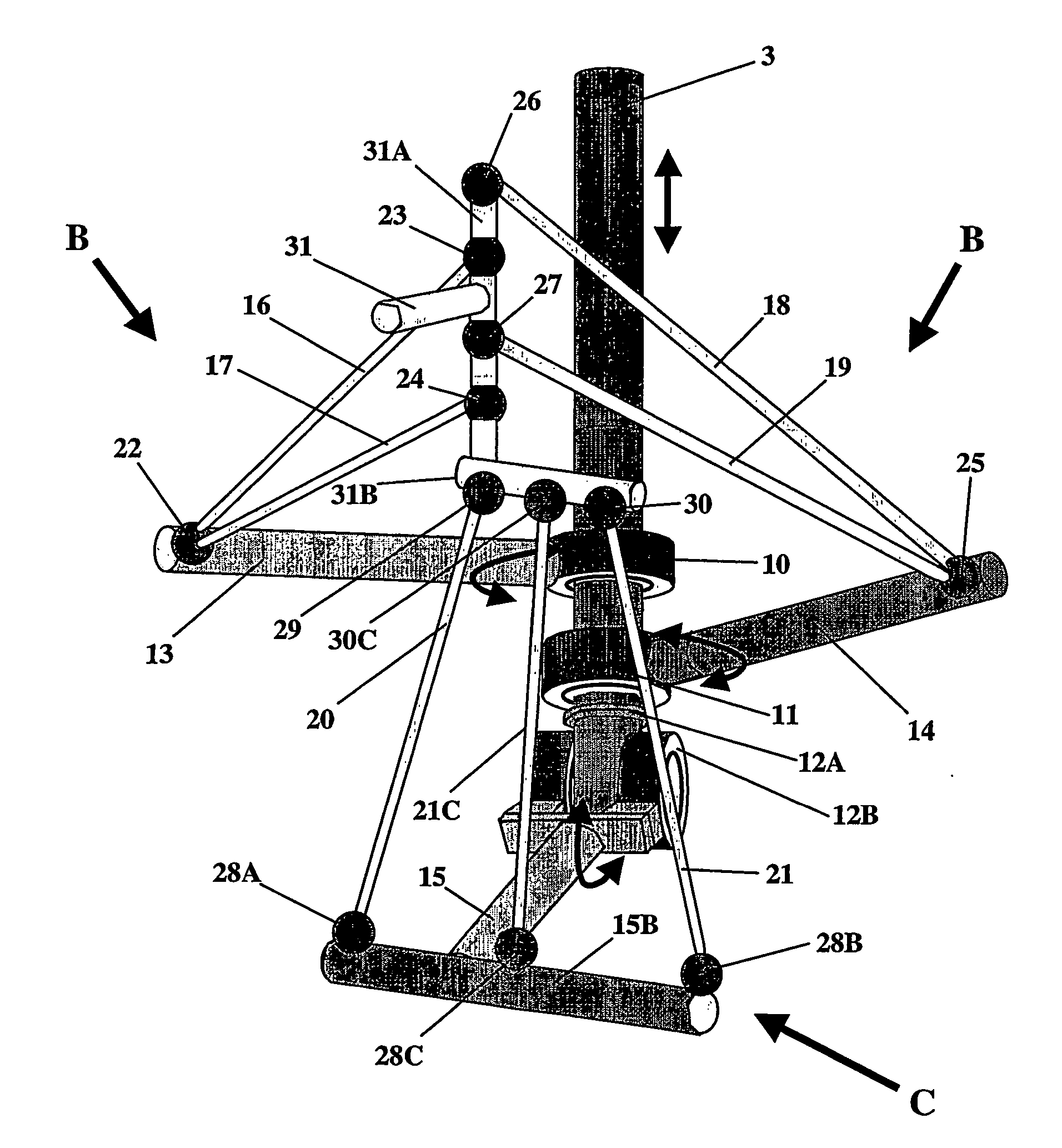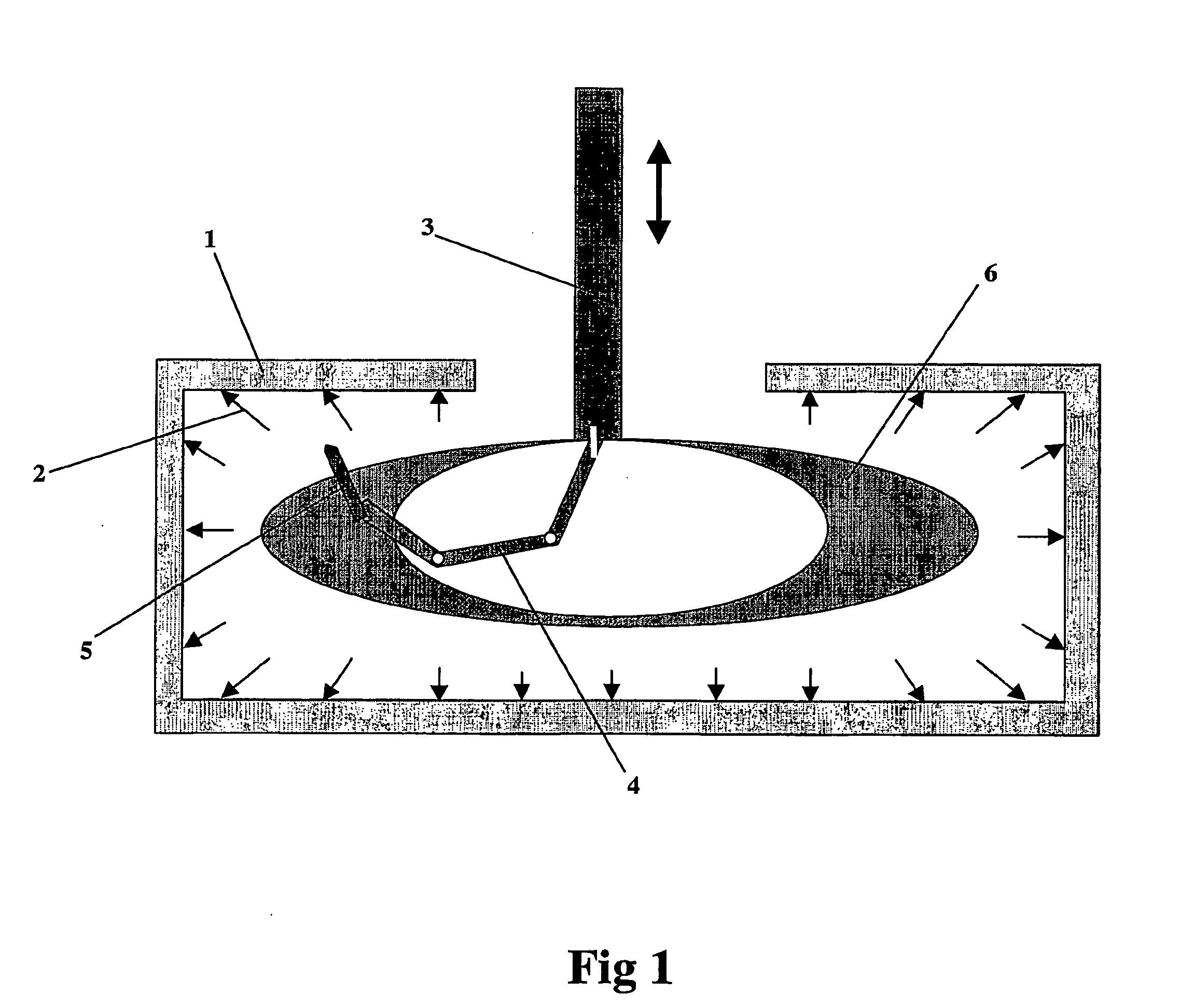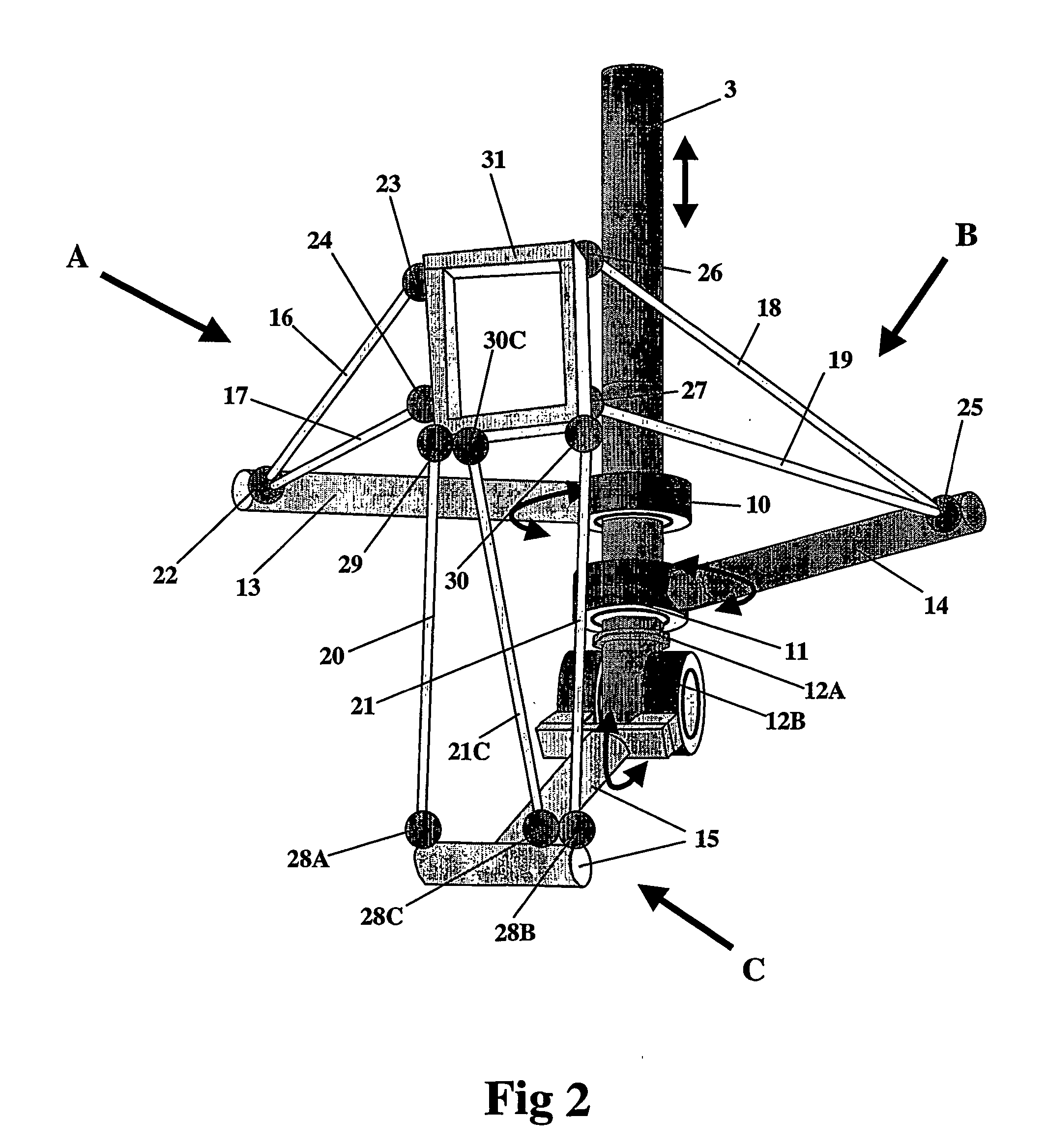Industrial robot
a robot and industrial technology, applied in the field of industrial robots, can solve the problems of limiting the speed of the robot, requiring expensive and energy-consuming actuators (motors), and weighing the robo
- Summary
- Abstract
- Description
- Claims
- Application Information
AI Technical Summary
Benefits of technology
Problems solved by technology
Method used
Image
Examples
Embodiment Construction
[0066]FIG. 1 schematically shows a frequently occurring case when using industrial robots in a more or less closed space. The space is limited according to the figure by walls 1, on the inside of which operations such as welding, painting, grinding, cutting, measurement, machining, assembly, etc., are to be carried out, as indicated by the arrows 2. To move the robot 4 into the space in question, there is used an external manipulator with a column structure 3, which is capable of being manipulated at least up and down. To enable the robot to move the tool 5 to the positions and orientations shown by the arrows 2, a spherically or elliptically shaped working range 6 for the robot is required. In addition, the kinematics of the robot should be designed such that the tool holder, on which the tool 5 is mounted, points approximately radially outwards from the spherical / elliptical working range 6. In that way, less demands will be made on the accessibility of the wrist that is to direct ...
PUM
 Login to View More
Login to View More Abstract
Description
Claims
Application Information
 Login to View More
Login to View More - R&D
- Intellectual Property
- Life Sciences
- Materials
- Tech Scout
- Unparalleled Data Quality
- Higher Quality Content
- 60% Fewer Hallucinations
Browse by: Latest US Patents, China's latest patents, Technical Efficacy Thesaurus, Application Domain, Technology Topic, Popular Technical Reports.
© 2025 PatSnap. All rights reserved.Legal|Privacy policy|Modern Slavery Act Transparency Statement|Sitemap|About US| Contact US: help@patsnap.com



